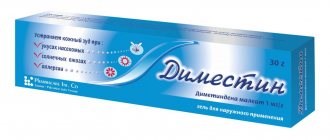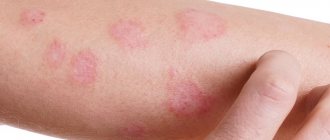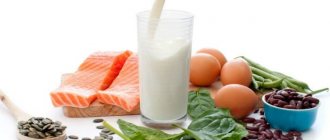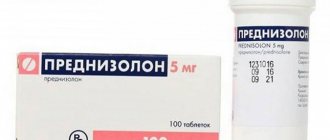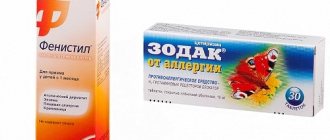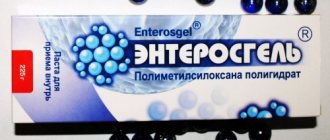Fenistil is an antihistamine, antipruritic, antiallergic drug, a blocker of histamine H1 receptors. Available in the form of syrup, capsules, emulsion and gel. It has a pronounced analgesic effect and, after application to the skin, relieves irritation and itching caused by allergic reactions.
Fenistil begins to act in case of allergies quite quickly, within a few minutes after applying the emulsion to the skin. The maximum concentration of the active substance in the body is reached after 1.5-4 hours.
The drug in the form of a gel and emulsion is used to relieve symptoms of sunburn, household and industrial burns (mild), as well as various types of skin itching caused by wet or dry eczema, insect bites or pruritic dermatosis.
Fenistil in the form of syrup (drops) is used for spring pollen allergies, urticaria, Quincke's edema, allergic rhinitis, insect bites, serum sickness, itchy forms of dermatoses, chicken pox, wet and dry eczema, measles and rubella. For preventive purposes, the drug is used in hyposensitizing therapy.
Composition and dosage form
Fenistil is a non-selective histamine blocker; the drug is used to eliminate signs of allergies, and not to treat its cause. According to the instructions, the medication is prohibited during lactation.
There are 3 dosage forms of the drug: drops, gel and tablets.
Composition of the drops: dimethindene, propylene glycol, saccharin, food additive E210.
Gel composition: dimethindene, propylene glycol, carbopol 974R.
Capsule composition: dimethindene, milk sugar, starch, 2-aminopentanedioic acid, silicone emulsion, titanium dioxide, gelatin.
The drops are packaged in glass bottles with a sprayer, the gel in tubes, and the capsules in blisters.
The principle of action of the drug is as follows: when reacting with a pathogen, histamine (a hormone, a mediator of an immediate allergic reaction) is activated, the active components block it, due to this the hormone does not have time to transmit the signal to the cells, and biologically active substances are not released. As a result, typical symptoms such as itching, redness, rash and swelling are absent.
Thus, Fenistil blocks histamine, which continues to be released, but the hormone is no longer able to cause an allergic reaction. That is why the drug affects only the symptoms and not the causes of allergies. The components of the antihistamine reduce the degree of permeability of the capillary walls, and therefore the liquid does not leak into the tissue and there is no swelling.
Inexpensive analogues of Fenistil gel
The original drug produced in Switzerland effectively eliminates allergic manifestations and skin itching. Due to the high cost, the product can be replaced with high-quality, inexpensive analogues of Fenistil gel.
Contains dimethindene. There are no exact structural analogs with identical active ingredients in the composition. However, the therapeutic effect of substitutes with identical therapeutic effects is no worse. When used in a course, analogues can significantly save on treatment.
All medications listed below:
- They have a high level of security.
- Helps cope with allergic dermatoses.
- Eliminate itching and irritation from insect bites.
The cost of a tube of Fenistil gel is 0.1% 50 g - 460 rubles, 30 g - 340 rubles.
List of inexpensive analogues of Fenistil gel
1. Gistan (Russia). Hypoallergenic non-hormonal cream based on dimethicone. It has pronounced antiseptic properties and fast action. An analogue of Fenistil gel ointment additionally contains:
- Natural component betulin (extract from birch bark).
- A complex of medicinal herbs that neutralize allergic manifestations.
- Essential oil of lily of the valley has wound healing properties.
- After applying the cream to problem areas, swelling and signs of inflammation noticeably decrease.
Tames itching and allergic manifestations of dermatoses.
Stops the growth of nettle rash.
Soothes skin with great sensitivity to sunlight.
Reduces the likelihood of infectious complications.
2. Nezulin (Russia). A cheap analogue of Fenistil gel against mosquito bites and other arthropods. Eliminates skin irritations of various etiologies. Has a natural composition.
Contains:
A complex of anti-inflammatory, wound-healing herbs: plantain, celandine, chamomile.
Essential oils: mint, basil, lavender, which have antispasmodic, antipruritic, bactericidal effects.
D-pantinol. This B vitamin substitute eliminates unwanted reactions after bites of mosquitoes and midges, horseflies, and bees.
- Promotes skin cell regeneration.
- Stimulates metabolic processes.
- Improves the appearance of the skin.
There are no contraindications for use other than individual intolerance to the components of the gel.
- Cream gel 30 ml - 90 rub.
3. Psilo-balm (Germany). Has a multifunctional effect. Does not contain hormones. The formula of the analogue of the Fenistil gel substitute includes diphenhydramine (dimidrol), thanks to which allergic manifestations and painful reactions to insect bites are quickly eliminated.
- Relieves pain, redness and swelling of tissues.
- Has a slight anesthetic and cooling effect.
- Restores skin after sunburn.
- Eliminates burning sensation after contact with nettles and other similar plants.
4. Menovazin (Russia). The cheapest analogue of Fenistil with a wide range of applications. Produced in the form of an alcohol solution. Helps with itchy dermatoses.
- When applied locally, it soothes wounds caused by arthropod insects.
- It has a mild analgesic effect, as it contains the anesthetic novocaine.
- Menthol in the medicine relieves itching and has a pleasant cooling effect.
- Bottle of solution 40 ml – 19 rubles.
Safe hormonal gel substitutes
1. Beloderm (Croatia). A product with proven clinical effectiveness. Has a high level of security. Cheap analogue of Fenistil for children under one year old. Penetrates easily into the skin. In pediatric practice, it can be prescribed from 6 months.
- Eliminates the negative reaction of the skin to any irritant.
- Helps with solar dermatitis.
- After the first application, pain noticeably decreases and stops the growth and spread of allergic manifestations.
- Cream 0.05% 30 g - 190 rubles, ointment 0.05% - 200 rubles.
2. Sinaflan (Russia). Soothes skin areas prone to irritation and itching. Has antibacterial properties.
- Restores damaged skin with solar erythematous dermatitis.
- Promotes the outflow of fluid in tissues.
A decrease in the manifestation of itching is observed almost immediately after topical application of the ointment.
- Ointment 0.025% 15 g - 80 rubles.
The drug is the oldest non-selective beta-blocker. Anaprilin analogs and substitutes are divided into structural drugs with the active substance propranolol and drugs with a different composition but a similar mechanism of action.
The doctor can replace the medication with a drug from a similar pharmacological group or with other more modern selective beta-blockers with a minimum number of adverse reactions.
For several decades, Anaprilin has been successfully used in cardiological practice. It is especially effective in the treatment of sinus tachycardia with unknown causes.
The disadvantages include a short period of exposure and a fairly extensive list of adverse reactions. The most common negative effects include bronchospasm.
The closest analogue and substitute for Anaprilin
1. Sotalol Kenon (Russia). This analogue of the drug Anaprilin belongs to the pharmaceutical group of substances that indiscriminately bind beta-adrenergic receptors. Increases blood flow speed. Reduces tissue susceptibility to lack of oxygen.
Stops involuntary trembling of body parts caused by muscle contractions. Improves local blood circulation. Normalizes blood pressure parameters and heart rate. Application is advisable for:
- Arterial hypertension.
- Clinical electrocardiographic syndrome with attacks of paroxysmal tachycardia.
In large dosages it may cause drowsiness.
- Tablets 80 mg 20 pieces - 100 rubles.
Indications
Fenistil in the form of drops and capsules is used for the following diseases:
- nettle fever;
- seasonal allergic conjunctivitis;
- allergic inflammation of the nasal mucosa and nasopharynx;
- nutritional allergy;
- allergic reaction due to taking medications;
- angioedema;
- itching due to eczema, chicken pox, rubella measles, bee bites, mosquito bites, dermatitis, etc.).
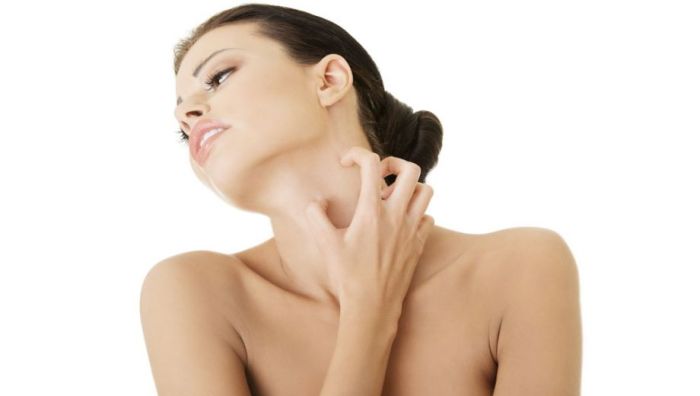
Drops and tablets are used to prevent allergies, as one of the components of complex hyposensitizing treatment.
The gel is used to eliminate skin itching of various origins: dermatoses, nettle fever, chickenpox, measles. This list can be supplemented with itching due to the bite of wasps, mosquitoes, bees, and thermal burns. Read more about what to do if you are bitten by insects here.
Fenistil-gel: analogues for children up to one year and older, inexpensive and effective against bites and allergies
Human skin is defenseless when it is affected by allergic reactions, diseases such as dermatosis or eczema, burns, and insect bites. She is the first to signal to us that not everything is okay with the body.
Adults, having accepted this request for help, find and use appropriate medications. But children most often cannot do this themselves and understand...
Let's consider how to replace Fenistil gel for children under one year of age and older, its inexpensive but accessible analogues against mosquito bites and other insects.
Composition, use of the original drug, price
The leader in pharmacology in antihistamine effects and saving the human skin from itching and inflammation is the Swiss drug Fenistil .
The spectrum of its action is wide. It has the following indications for use :
- dermatosis;
- hives;
- eczema;
- bites of bees, mosquitoes, and other insects (here are all the remedies for bites);
- allergies (about what ointments help with this - here);
- 1st degree burns (you can read about ointments for such cases here);
- Recently it has been used in the complex treatment of measles and hay fever.
The composition of the gel is unique . Its main active ingredient is dimethindene maleate, which is not used in Russian analogues.
The composition of Fenistil gel also includes disodium edetate, carbomer, purified water with sodium hydroxide.
Manufacturers claim that this drug can be used by children from birth, however, they need to apply it to the skin in small quantities and with caution. However, doctors recommend that children under 1 year of age not use this medicine in treatment at all.
This gel, which really has many advantages, has one more drawback - a small tube with 30 g of gel costs more than 500 rubles .
Is it possible to find a cheaper analogue of this cream suitable for very young children?
Tsindol
Tsindol is considered the most successful in pediatrics and, most importantly, an absolutely harmless analogue of Fenistil.
It is produced in the form of a suspension (it is also called mash in children's hospitals), it is based on zinc oxide.
This chemical compound has an excellent softening, drying effect on the skin, without side effects.
Therefore, this suspension can be used without any fear even by newborns for diaper rash, rashes, heat rash, and contact with wet diapers.
Before applying Tsindol to problem areas of the body, the baby should be bathed in a weak solution of potassium permanganate and dried.
After using the drug, it is advisable not to wrap the child in order to allow the suspension to be absorbed freely.
It acts only on the epidermis - the top layer of skin, and does not penetrate the circulatory system, which once again confirms the safety of this product.
For older children, Tsindol is indicated for minor wounds, burns and bites from mosquitoes and other insects. There is information about the positive effect of the drug in the treatment of chickenpox.
If we remember the price, the benefit is visible here too: a 125 ml bottle costs from 70 to 110 rubles .
Nezulin
The packaging of this drug says: “cream-gel for irritation, itching and redness of the skin . Suitable for the whole family not only because of its wide range of effects, but also because of its composition.
It includes:
- D-panthenol is a synthetic analogue of vitamin B, it is also called the vitamin of softness and beauty;
- essential oils of lavender, basil, mint;
- extracts of chamomile, celandine, licorice and plantain.
The bioactive effect of these components is due to their plant origin. Panthenol ointment in its pure form is used for diaper rash in newborns. Even more information about ointments for diaper rash and heat rash is here.
The price of Nezulin is also low - within 150 rubles.
Hofitol
This analogue of Fenistil contains field artichoke extract. For newborns it is available in the form of special drops in 20 ml bottles.
For babies of the first year of life, it is prescribed in the form of drops : 5-10 drops of the solution should be added to 5 ml of water and given on an empty stomach 3 times a day.
Helps with skin diseases and even with jaundice of newborns. The only side effect of the drug is a slight loosening of the child’s stool.
One bottle of solution costs a little more than 300 rubles and is sold in pharmacies without a prescription.
Pimecrolimus (Elidel)
This analogue no longer has plant, but chemical components. The drug is a derivative of the macrolactam ascomycin.
The substance was previously considered hormonal, but recent studies show that no hormonal effects are observed.
Available in the form of ointment and cream , it acts quickly. It has two main indications: eczema and atopic dermatitis (read about ointments for this disease).
It is actively used to assist children from 3 months to 2 years.
Elidel is very expensive - up to 800 rubles , but in terms of pharmacological effects on infants it has practically no analogues.
Even more information about ointments for various diseases in your babies:
Loratadine
Analogs (even more successful ones) of Fenistil may not necessarily be the same in shape. For example, this drug is available in the form of tablets, effervescent tablets and syrup.
Children, of course, are recommended to be given either “pop” or sweet syrup.
The drug is a 2nd generation medicine, this has a positive effect on its effectiveness. Doctors allow it to be used from 2 years of age.
Up to 6 years of age, doses should be gentle : it is recommended to give half of the tablets once a day, syrup - no more than 5 mg, also once a day.
Benefits of Loratadine:
- no negative effect on the nervous system;
- the cardiovascular system does not change its rhythm and functions;
- is not addictive;
- no sedative effect is observed even at 2 months of age.
Syrup costs 70-120 rubles, effervescent tablets - a little more than 60.
Tsetrin
This medicine is also of the second generation and is indicated for children from 2 years of age . Available in the form of tablets and syrup. Tablets are usually given 2 times a day; syrup can be used once a day, 5 mg at bedtime.
After 6 years, the dose can be doubled. Tsetrin should be used twice as much, but only in a decreasing direction, for children with renal failure.
The main effect of this medicine is explained by cetirizine, an active substance.
Cetirizine blocks receptors in the body at the cellular level. Signs of allergies and itching, for example, with urticaria, are neutralized.
The price of tablets in the regions reaches 250 rubles, syrup costs about 130.
Ointments
They are Dermadrin and Ketocin.
Dermadrin
The drug has a rapid action combined with an anesthetic effect. Prescribed for children aged 5 years and older.
Its main active component is diphenhydramine , a substance similar to the main components of Fenistil. This also includes:
- peanut butter;
- glycerol;
- paraffin;
- wax;
- propylene glycol;
- distilled water.
These components significantly soften and moisturize the skin, neutralizing allergies and their manifestations.
The price of the drug is from 135 to 350 rubles per package, depending on the volume.
Ketocin
Prescribed as an ointment or gel for children over the age of one year.
It consists of:
- ketotifen;
- dimexide;
- boric acid;
- zinc oxide;
- coriander oil.
The average price of the drug is 230 rubles.
From insect bites
Almost all of the drugs described above are excellent for treating wasp, bee, and mosquito bites. Children often perceive such bites as painful and scratch the itchy areas, which only increases suffering.
Today there are quite a lot of drugs that can quickly stop the negative effects:
- Gistan - contains only herbal ingredients, is indicated for children under 2 years old, costs about 200 rubles;
- Hydrocortisone is a hormonal ointment that can be used after bee and even scorpion stings, costs about one hundred rubles;
- Gardex is a children's spray against mosquito and midge bites, the price is just over 100 rubles.
Fenistil gel, despite widespread advertising, is not the only remedy that can fight skin diseases in children.
It has quite effective analogues. Just before using them, you should definitely consult a doctor .
Source: https://malutka.pro/preparaty/drugie/analogi-fenistil-gelya.html
Method of application and dosage
Fenistil drops are used for allergies in the following dosage:
- patients from 1 month - no more than 10 drops three times;
- from 12 months to 3 years – 15 drops three times a day;
- from 4 to 13 years – 20 drops three times;
- patients over 13 years old, 30–40 drops 3 times a day.
Drops for a newborn can be mixed with breast milk.
This dosage form causes drowsiness.
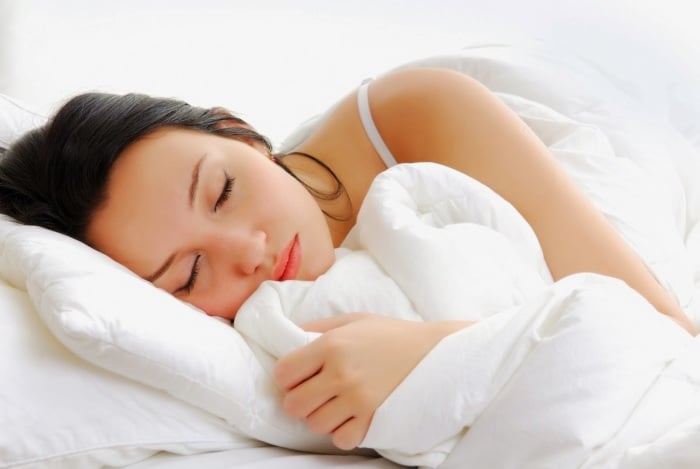
The dosage of capsules for patients over 13 years of age is 1 tablet once a day, since the drug is effective for 24 hours. Take your medicine before bed. The tablet does not need to be chewed; after swallowing, wash it down with water. The therapeutic course lasts 25 days.
The gel is applied to the affected skin no more than 4 times in 24 hours. Lubricate the skin with a thin ball, protect this area from exposure to ultraviolet radiation. If the itching is severe and the rash is extensive, then it is allowed to use gel and drops together.
List of cheap analogs of Fenistil gel
Effective and inexpensive analogues-substitutes for Fenistil gel
Fenistil gel is a high-quality antihistamine medication from a Swiss pharmaceutical company.
The gel will help against various allergic reactions of the body that appear on the skin. A considerable number of people suffer from them and many of them resort to using medications.
Despite the popularity of the drug in pharmacies, there are a sufficient number of substitutes at a more affordable cost.
What is it prescribed for?
The medicine helps against itchy allergic rashes, hives, as well as eczema and the consequences of various insect bites.
Contraindications
- Problems with the body’s adequate response to active and related components;
- Presence of closed-angle glaucoma;
- Benign prostate tumor;
- Age up to 1 month.
Use during pregnancy and breastfeeding
Some doctors categorically deny the possibility of using pharmaceutical products in preparation for childbirth in the last stages of pregnancy, while others note that under strict medical supervision and compliance with the prescribed dose, this is only possible in the first trimester.
Breastfeeding of children is suspended during therapy.
Possible negative consequences of involvement
The medicine stands out for its safety and effectiveness. Does not contribute to the development of serious simultaneous reactions. In rare cases, redness, drying, and itching occur in the area where the gel was applied.
Correct treatment regimen
Instructions for use:
The product should be applied externally to the affected area 2 to 4 times a day. In case of severe itching, parallel use of tablets or capsules of antihistamine type medications is recommended. This approach will speed up recovery.
Key Aspects of Engagement
- Children are prohibited from applying the gel to large areas, especially in the presence of inflammatory processes and bleeding;
- The presence of excessive itching requires prior consultation with a doctor;
- During treatment, you need to avoid exposure to the sun and avoid direct rays;
- If symptoms become severe or worsen, you should immediately seek medical help;
- It does not affect the control of machinery or cars.
How much does Fenistil gel cost: price at the pharmacy
You can easily buy the medicine at the nearest pharmacy - you do not need a doctor's prescription. According to the Internet site apteka.ru (Moscow), its cost reaches up to 636 rubles. The price tag may be unaffordable for many patients, so it may be worth considering alternative options.
List of available replacement products of Russian and foreign production
The table below lists a list of substitutes that are optimal for their effect. They are produced by pharmaceutical manufacturers in Russia and Europe. Many of them are fairly well-known drugs on the market - they are in great demand and have good reviews.
| Name of cheaper analogues of the drug Fenistil gel | Apteka.ru (price in rub.) | Piluli.ru (price in rub.) | ||
| Moscow | St. Petersburg | Moscow | St. Petersburg | |
| Advantan (cream) | – | – | 569 | 595 |
| Zyrtec (tablet form) | 215 | 215 | 201 | 208 |
| Rederm (ointment) | – | – | 137 | 137 |
| Beloderm (cream) | – | – | 130 | 135 |
| Akriderm (ointment) | 100 | 104 | 108 | 105 |
Advantan – (manufactured in Germany)
The German medicine is competent in the fight against skin diseases, in particular atopic and contact and allergic dermatitis, eczema of various types.
Not intended for people with tuberculosis of the body, as well as syphilis. Prohibited for diagnosed viral skin lesions, including chickenpox. Does not treat rosacea or perioral dermatitis.
Children under 4 months of age who cannot tolerate the active component of Advantan should not use it. Pregnant women are allowed subject to the rule of greater benefit than potential harm to the unborn child.
For nursing mothers, use is permissible, but avoid the breast area.
The instructions note that it is unacceptable for the medicine to come into contact with the visual organs, and also that it does not affect the reaction speed and other important properties necessary during the performance of important and responsible work.
Apply externally once every 24 hours in a thin layer to the affected areas. The therapeutic period averages about 12 weeks.
Another advantage of the drug is that it extremely rarely provokes negative parallel reactions. They occur in the rarest of situations. These include increased itching, a burning sensation in the place where the pharmaceutical product was applied, and a rash.
Zyrtec – (Switzerland/Italy)
It is famous not only for overcoming the symptoms of allergic dermatoses and their attendants, as well as extremely disturbing itchy rashes, urticaria, angioedema, but also seasonal runny noses of allergic origin.
Persons with intolerance to certain elements of Zyrtec should refuse.
Doctors recommend refraining from using it during pregnancy.
The same applies to those in the lactation period - the active component is excreted along with milk and can have a detrimental effect on the further development of the newborn.
A special instruction is to avoid drinking strong alcoholic beverages. Patients with pathological phenomena of the renal system require an individual approach and strict monitoring of the clinical picture.
The method of administration is determined by the doctor, but the recommended dose for adults is 1 pill per day (10 mg). In childhood, the dosage is similar.
As a side effect, the patient sometimes experiences disruptions in the functioning of the gastrointestinal tract, manifested in a feeling of dryness in the mouth and pain in the abdomen.
The central nervous system may be affected - sleep cravings, migraines, rapid onset of general fatigue, and in some situations - psycho-emotional overexcitation are acceptable.
It is possible in the form of hypersensitivity of various kinds of allergies.
Rederm – (Russian substitute)
Indicated for acute and chronic dermatoses, as well as psoriasis, eczema, neurodermatitis, lichen planus, ichthyosis, urticaria, rashes due to allergies.
Contraindicated in patients with a tendency to be allergic to this medicine, who have malignant tumors on the body, melanoma, rosacea, chickenpox, fungus, and viral lesions. In addition, Rederm should not be applied to open wounds or used in pediatrics - children under two years of age and women during breastfeeding. Prolonged therapy and the presence of liver diseases are not recommended.
Apply to the affected area with an ointment height of about 0.5 cm at the site of the lesion, rubbing a little twice in 24 hours. Only a specialist can establish a different frequency and dosage. In some situations, it is allowed to resort to auxiliary dressings, changed daily. The treatment period usually ranges from 2 weeks to a month.
Side effects include dry skin, itching, and redness. For the most part, absorption is good.
Beloderm – (Croatia)
Intended against dermatitis - against the background of allergies with itching, after bites of various insects, mainly bees and mosquitoes. Will help against contact, solar and radiation dermatic reactions. It fights well against lichen, eczema, erythrema.
Does not treat skin tuberculosis, chickenpox, fungal, viral and bacterial infections of the body. Do not apply to open wounds or rosacea. Age limit – up to 6 months. Not recommended for those preparing for childbirth and breastfeeding. Doctors do not recommend applying the drug to the face and around the eyes.
Apply only externally in a thin layer twice a day. It rubs in a little. Continuous treatment lasts no more than 25 days.
Mild situations of hypersensitivity occur as accompanying actions. They are characterized by an intensification of existing diseases - severe scabies, itching, hypermia of the body. If these phenomena are pronounced, treatment is stopped immediately.
Akriderm - (well-known domestic cheapest product)
It has not only an affordable price tag, but also a quality component. Known for its effectiveness in the presence of psoriasis, allergies, many types of dermatitis - solar, occupational, accompanied by severe itching.
The Akriderm ban applies to patients with cutaneous tuberculosis, viral diseases, acne rosacea, and perioral dermatitis.
Pregnant women are allowed to use it, but under close medical supervision, since an incompetent approach contributes to the development of a number of severe side effects and severe problems in the child in the future.
This can especially happen with long-term therapy. It is recommended to stop lactation for a certain time.
As a side effect, patients experience a burning sensation, irritation at the site of application, prickly heat and allergies. In such situations, you should contact a medical institution for qualified help.
Conclusions on inexpensive synonyms
Having analyzed the data from online pharmacies for the presence of effective substitutes, it was possible to establish that those with the dermatological diseases mentioned above do not have to worry about their wallet and financial savings.
Currently, mass production of similar drugs has been established, which are sold at more reasonable prices. They are produced by European and Russian pharmaceutical companies. But choosing a synonym is a responsible matter.
In order not to harm yourself if you have certain symptoms listed above, you must visit the hospital and follow all medical instructions.
Source: https://analogi-deshevle.ru/fenistil-gel.html
Contraindications and side effects
Fenistil has the following contraindications:
- hypersensitivity to the components of the drug;
- closed-angle type of glaucoma (for internal use);
- change in frequency of urination;
- infants up to 1 month.
Gel should not be used to treat bleeding wounds or overly irritated skin.
The medicine is used carefully during breastfeeding and only under the supervision of the attending physician.
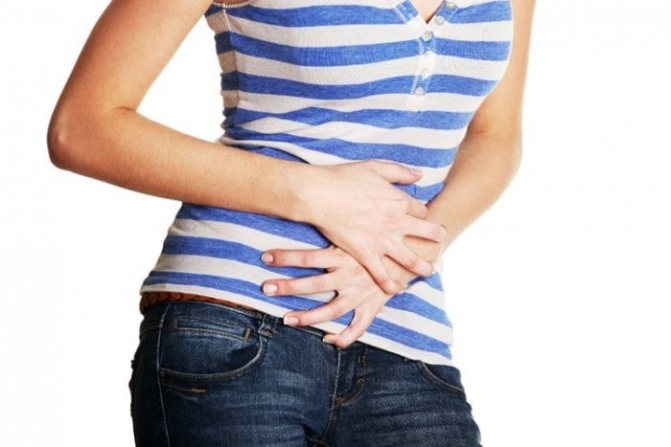
The antihistamine has the following side effects: increased heart rate, mental disorders, involuntary muscle contractions, xerostomia. This list can be supplemented by temperature fluctuations, urinary retention, and a sharp decrease in blood pressure. Such conditions are extremely rare, only as a result of improper use or an unreasonable increase in dosage.
Side effects from the gastrointestinal tract are possible in the form of attacks of vomiting, painful sensations in the stomach, exacerbation of peptic ulcers. Possible disturbances in the functioning of the respiratory system: temporary cessation of breathing at night in patients under 12 months of age, tightness in the chest, shortness of breath. As a result of improper use of the gel, rash, peeling, burning and itching occur.
For shortness of breath and obstructive expiratory disorders, due to chronic inflammation of the bronchi and emphysema, antihistamines should only be taken under medical supervision.
Interaction of Fenistil with other drugs
Antispasmodics and drugs that dilate the bronchi (bronchodilators) increase the risk of urinary retention and an increase in intraocular pressure due to their m-anticholinergic effect.
It is important to avoid taking Fenistil together with medications that contain ethyl alcohol. Otherwise, depression of the central nervous system may occur.
Enhances the effect of anxiolytics and hypnotics.
With simultaneous use of ethanol, the speed of psychomotor reactions slows down.
Tricyclic antidepressants and anticholinergic drugs increase the risk of increasing IOP.
MAO inhibitors enhance the anticholinergic and CNS depressant effects.
Fenistil during breastfeeding
Treatment of allergies involves the implementation of 3 points: elimination of allergy pathogens, relief of symptoms, and reduction of antibody production. However, this treatment regimen does not work when breastfeeding, since many antihistamines are prohibited from taking. Read more about antihistamines and their effects in the article at the link.
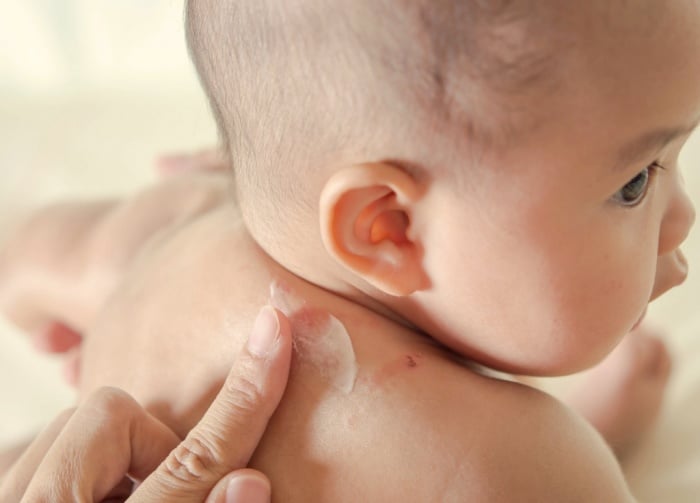
Some doctors believe that Fenistil is a safe antihistamine that can be used to treat even newborns. Thanks to the active substances, the drug perfectly helps to cure eczema, bee and mosquito bites, eliminates itching, excessive tear production and swelling.
Opponents of the drug believe that it is prohibited to use during lactation. This is explained by the fact that the effect of the drug components on a newborn has not been studied. And the concentration of active substances in mother's milk is unknown. According to opponents, the medication can be taken once if the mother experiences life-threatening symptoms (angioedema).
Despite this, the drug is prescribed to lactating women. If a nursing mother has an acute allergic reaction, the course of treatment is no more than 10 days, this is enough to relieve the symptoms. If symptoms disappear earlier, stop taking the drug.
Thus, Fenistil is allowed to be used by lactating women, but only after a doctor’s prescription.
A nursing mother must follow the dosage and frequency of administration determined by the doctor after research. Subscribe to our VKontakte group
During pregnancy and breastfeeding
The drug in capsule form can be used during pregnancy only in cases where there is a real threat to the life of the poor mother. Only the doctor leading the pregnancy can make the final decision on prescribing this drug, having first weighed all the risks for the mother and fetus.
If there is a need to use the oral form of fenistil during lactation, then breastfeeding should be abandoned during treatment.
It is strictly contraindicated to apply fenistil gel to the nipples of nursing mothers.
In the first trimester, the drug in gel form can be used only after consultation with the doctor managing the pregnancy. It is prohibited to use it in the 2nd and 3rd trimesters. It is also not recommended to apply the gel to large areas of skin, especially to areas with open bleeding and severe irritation.
